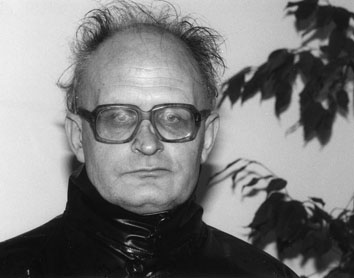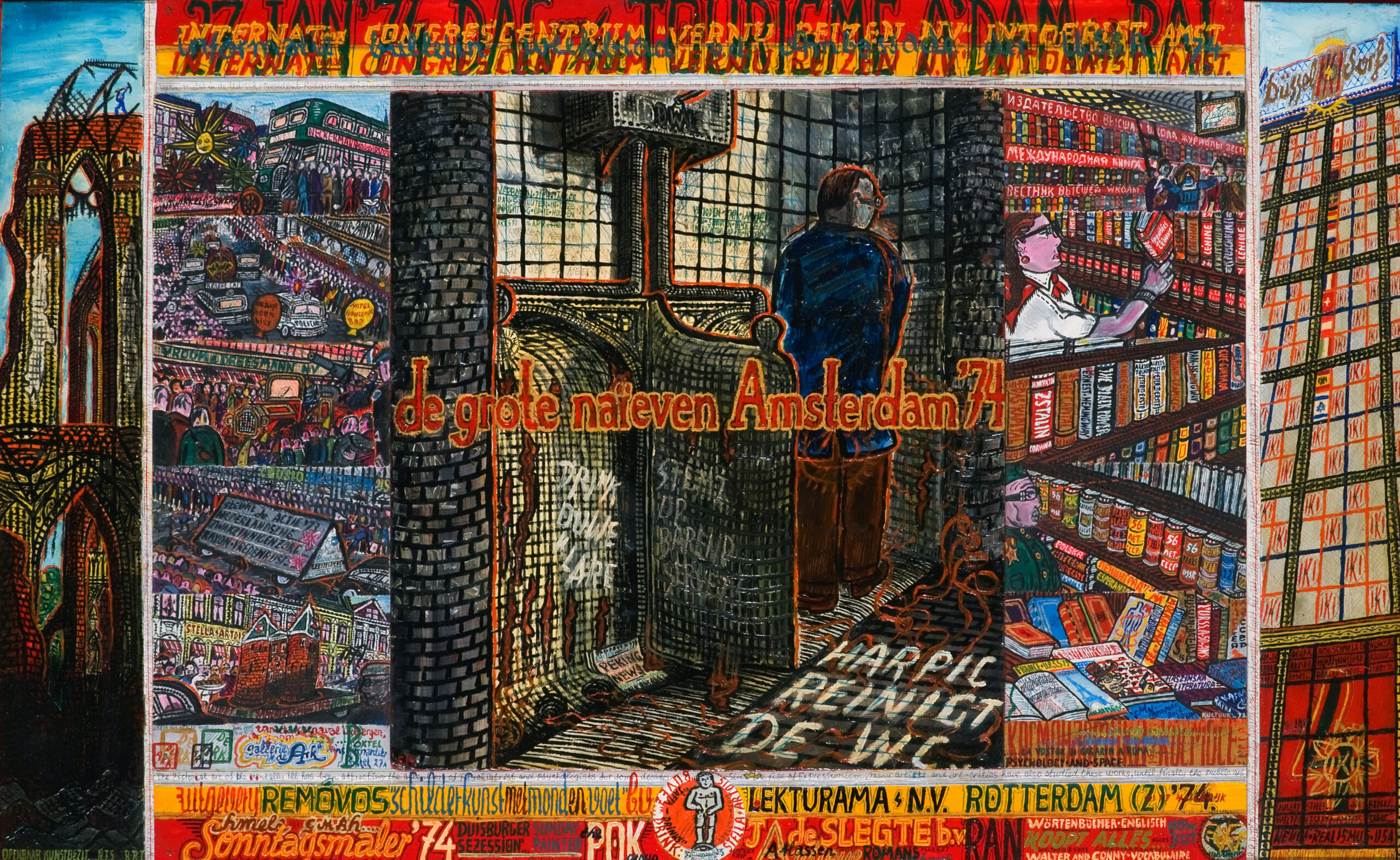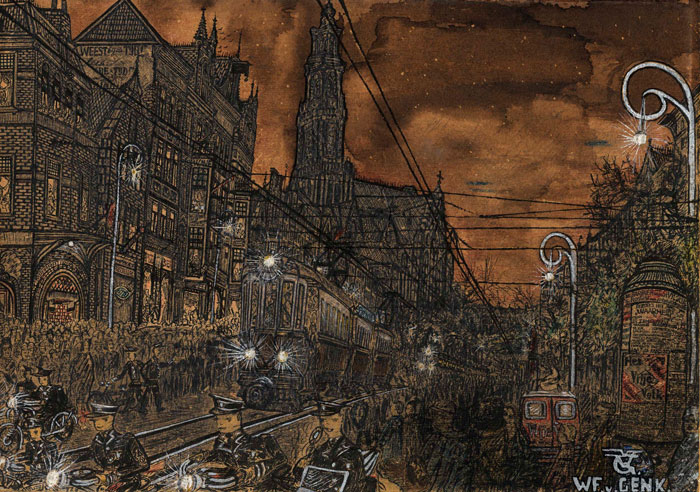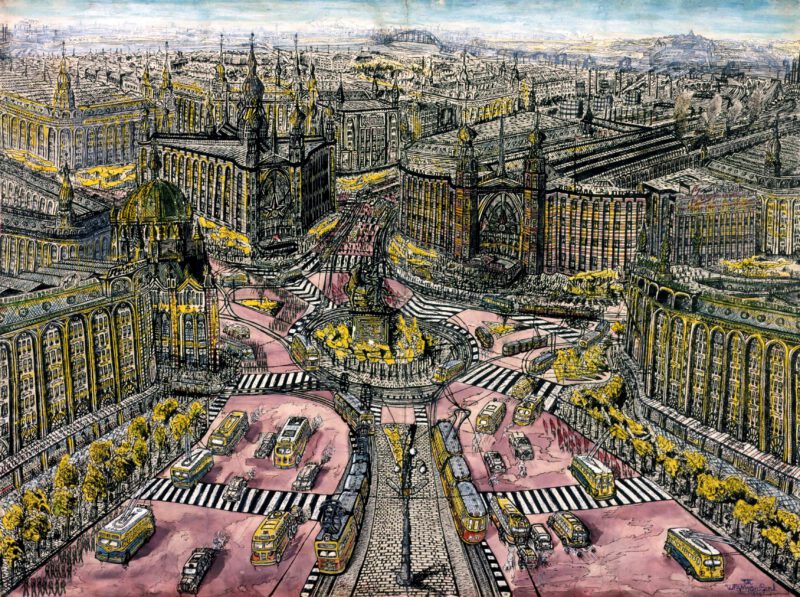
Willem van Genk (1927 Voorburg – 2005 The Hague) was born into a devoutly Catholic family, the youngest of ten with nine older sisters. Shortly after his birth, his father had to give life-saving blood. His mother died when he was five years old; his father initially ran a grocery store and later became a civil servant. The young Willem had serious learning difficulties and was unable to finish his education. Arithmetic was particularly difficult for him, but he excelled in geography. During the war, the Gestapo raided the family home in search of his father, who had been working for the Resistance, but he managed to escape just in time. Willem, however, was violently interrogated. In 1947, he was placed in a workshop for the developmentally disabled, where he performed simple labor until 1964. He lived in a shabby boarding house and often spent the evenings at his sister’s kitchen table drawing, a passion he’d enjoyed since early childhood. There, he created a magnificent oeuvre, that portrayed his love for urban architecture, international travel and social politics in phenomenal ways. Driven by a deep sense of humiliation and an unshakable belief in his own artistic ability, he achieved international fame, which he was able to fully experience in the years before his death. In 2021, La Collection de l’Art Brut in Lausanne, Switzerland, hosted a solo exhibition of his work for the third time.




